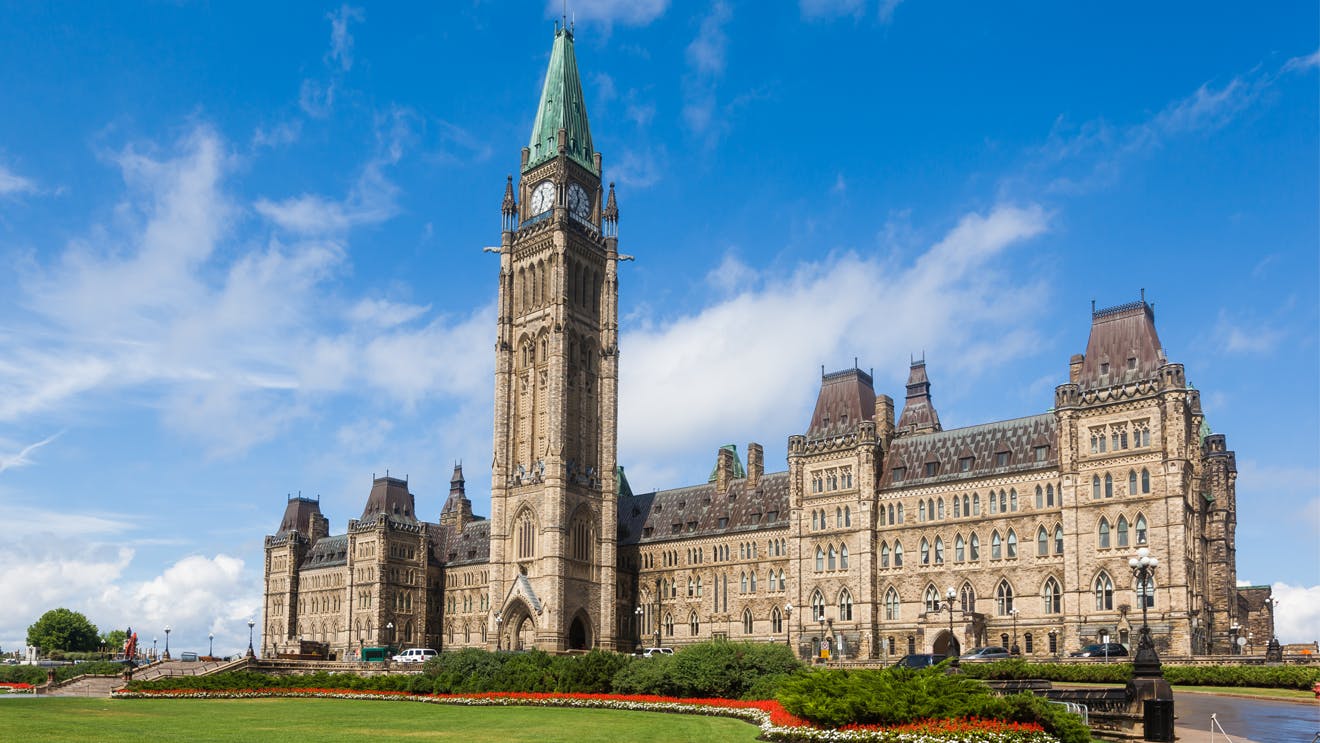September 8, 2023
The Honourable Chrystia Freeland, P.C., M.P.
Deputy Prime Minister and Minister of Finance
Dear Minister Freeland,
We appreciate the opportunity to provide a written submission to the Department of Finance Canada regarding Budget 2023 measures to grow Canada’s clean economy, including the Investment Tax Credits (ITC) for Carbon Capture, Utilization and Storage (CCUS), Clean Technology and the related labour requirements.
The Calgary Chamber supports the federal government's recently proposed ITC legislation. It sends a strong signal to businesses and investors that the federal government is committed to working with the energy sector to mitigate the significant financial liability and risks associated with decarbonizing existing assets in addition to supporting investments in clean technology.
The energy sector continues to reduce its emissions while maintaining production and ensuring Canadians have access to reliable and affordable energy. Continued progress on decarbonization, particularly considering the timelines outlined in the 2030 Emissions Reduction Plan, however, requires the incentives be structured in a manner that recognizes the long-cycle investment timeframe associated with deploying capital for long-life assets. This is particularly acute for technologies like CCUS that require significant capital outlays and have high operating costs – while providing negligible returns on investment, if any.
As such, our formal submission outlines critical recommendations required to enhance the ITCs, including extending the eligibility timeframe of the ITCs beyond 2030 and proposing the inclusion of operating expenses as eligible costs. Additionally, we make recommendations to align the labour requirements with realistic Canadian labour projections, recognizing the need to compete for capital and labour with other jurisdictions, including the United States, is critical to our economic and environmental future.
Our focus is to ensure we remain an attractive and competitive jurisdiction for investment. The reality is we compete with the world for capital and talent – and we need both to decarbonize our industrial complex.
Thank you in advance for your consideration and we look forward to working with you to accelerate a sustainable and prosperous future for all Canadians.
Sincerely,
Deborah Yedlin
President & CEO
Calgary Chamber of Commerce
Calgary Chamber of Commerce – SUBMISSION REGARDING BUDGET 2023 MEASURES TO GROW THE CLEAN ECONOMY
The Calgary Chamber of Commerce is encouraged by the proposed Investment Tax Credit (ITC) legislation for Carbon Capture, Utilization and Storage (CCUS) and Clean Technology, recognizing it is an important signal to investors the government is committed to supporting industry decarbonization through financial incentives.
However, the 2022 release of the 2030 Emissions Reduction Plan and subsequent decarbonization legislation – including the proposed Clean Electricity Regulations, oil and gas emissions cap, methane regulations, clean fuel regulations, zero-emission vehicle sales target, Green Buildings Strategy, and the fertilizer emission reduction target – have resulted in a layering of policies and regulations that are challenging and costly for many businesses and investors to navigate and model. While the recently proposed legislation is welcome as a step to alleviate a portion of the financial burden of decarbonizing, significant changes to the legislation are necessary to guarantee Canada’s continued competitiveness with other jurisdictions, advance national decarbonization goals and ensure the effectiveness of the policy. This is particularly important in light of the Inflation Reduction Act in the United States, which has been in effect for a year and has generated 86,000 jobs, $132 billion USD in investment and 270 clean tech startups.
CARBON CAPTURE UTILIZATION AND STORAGE INVESTMENT TAX CREDIT
Recommended amendments
- Extend the ITC funding timeline to 2035 before ratcheting down supports. Extending the full suite of incentives beyond 2030 and at the highest credit thresholds will bring parity with other policy timelines – including the recently released Clean Electricity Regulations – that unlock investment and align projects with realistic timelines. Extending the timeline will also reduce the cost pressures associated with concurrent projects competing for labour and resources.
- Expand the ITC to include both capital and operating expenditures, comprising direct and indirect project costs as well as transmission, storage, exploration and development costs. This will be important to provide investors greater certainty and attract capital. Costs incurred prior to a final investment decision (FID) should also be partially eligible, and become fully eligible once an FID has been made.
- Establish and implement carbon contracts for differences (CCfD) or a production tax credit (PTC) based on consultation with industry and sound economic modelling. While ITCs are significant to supporting project economics, CCfDs and PTCs are paramount for offsetting high operating costs and de-risking investment by guaranteeing long-term credit values and allowing companies to access financing from private and public markets.
- Ensure the ITC is fully stackable with incentives provided by other levels of government – without reduction of the ITC – given CCUS projects are not able to generate revenue or returns on investment through operations.
- Clarify that the ITC is fully stackable with other federal funding streams – without reduction of the ITC – allowing businesses to access complementary government funding, such as the Strategic Innovation Fund or the Canada Growth Fund, recognizing all supports are needed to lower the cost of decarbonization.
- Include direct pay options within the ITC to provide value for non-taxable entities, including Indigenous partners and pension funds. Additionally, provide clarity on the eligibility of taxable versus non-taxable entities in relation to Alberta’s deregulated electricity market.
- Clarify the extent to which pre-commercial projects, such as capture-only technology, are supported through the ITC.
- Include projects that have Enhanced Oil Recovery (EOR) as eligible for the ITC, recognizing Canadian EOR projects have some of the lowest carbon intensity oil produced in the world, and that to fully realize the economic potential of CCUS, barriers to entry for all interested companies and permanent emissions mitigation technologies must be removed.
- Remove the prescriptive labour requirements, instead, offering incentives for proposed labour objectives. As Canada’s labour force continues to shrink, incentives will offer the greatest opportunity to achieve the desired labour outcomes, and remove unnecessary financial penalties.
CLEAN TECHNOLOGY INVESTMENT TAX CREDIT
Recommended amendments
- Extend the ITC funding timeline to 2035 before ratcheting down supports. Extending the full suite of incentives beyond 2030 and at the highest credit thresholds, will bring parity with policy timelines, including the Clean Electricity Regulations, unlock investment and helping align project processes with realistic timelines. Extending the timeline will also reduce the cost pressures associated with concurrent projects competing for labour and resources.
- Broaden ITC eligibility to include the necessary transmission infrastructure (both intra- and inter-provincial) for renewables projects, ensuring energy can be reliably and affordably provided to consumers.
- Ensure the ITC is fully stackable with incentives provided by other levels of government and other funding streams provided by the federal government, without reduction of the ITC.
- Include provisions for specific clean technologies such as hydrogen combustion and geothermal, which are co-produced with fossil fuels, to be included in the ITC. Geothermal energy systems and hydrogen combustion equipment, such as hydrogen-fired turbines, should be considered eligible for the Clean Technology ITC, given thehe purpose of the Clean Technology ITC is to accelerate investment in clean electricity projects needed for a net zero grid.
- Include direct pay options in the ITC to provide value for non-taxable entities, including Indigenous partners and pension funds.
- Emerging technologies such as clean hydrogen and energy storage should be incentivized at the same benefit rate to ensure a level playing field that drives the most cost-competitive technologies to be built.
- Provide a ‘roadmap’ for funding streams and policies, ensuring clarity and consistency for investors looking to Canada — similar to the model implemented in the US.
- Remove the prescriptive labour requirements, instead, offering incentives for proposed labour objectives. As Canada’s labour force continues to shrink, incentives will offer the greatest opportunity to achieve the desired labour outcomes, and remove unnecessary financial penalties.
LABOUR REQUIREMENTS
Recommended amendments
- Remove the ITC’s associated labour conditions, recognizing the significant challenges associated with meeting the required thresholds due to the profound shortage of skilled labour and apprentices. Keeping the current stringency of the labour requirements will cause costs to rise and likely impede project economics and therefore viability – particularly as concurrent projects will need to compete limited labour and resources.
- At a minimum, re-draft the rules associated with the labour requirements to be ‘additional incentives for compliance’ rather than 10 per cent point penalties for non-compliance.
- Reduce the 10 per cent apprenticeship requirement threshold to create a level of flexibility that reflects the limited availability of applicable skilled labour.
- Use the ITCs to facilitate a robust data collection process to understand labour market gaps. Leverage this data to work with post-secondaries and unions to ensure adequate supports for students and workers are available to meet demand.
- Utilize a regional approach to labour requirements, recognizing jurisdictional nuances in the available labour force and that certain provinces have institutionalized labour credentials differently than others – it is not a one-size fits all.
- Clearly define ‘reasonable efforts’ within necessary labour requirements, recognizing the significant financial cost associated with non-compliance.
- Invest in labour supports, including post-secondaries and immigrant-serving organizations, to expand the labour force necessary for executing on decarbonization projects.
ABOUT THE CALGARY CHAMBER OF COMMERCE
The Calgary Chamber of Commerce exists to help businesses reach their potential. As the convenor and catalyst for a vibrant, inclusive and prosperous business community, the Chamber works to build strength and resilience among its members and position Calgary as a magnet for talent, diversification and opportunity. As an independent, non-profit, non-partisan organization founded in 1891, we build on our history to serve and advocate for businesses of all sizes, in all sectors across the city.







